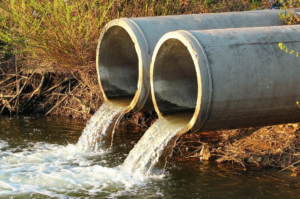Stucco repair is a budget-friendly option for minor and isolated damage. However, more widespread or severe problems may require replacement.
Inspect the stucco for cracks, chips and other signs of damage. Make note of the size and location of each problem. Chisel away any loose or damaged stucco to reveal the wire lath if necessary. Contact Stucco Repair Philadelphia now!

Even if you’ve been lucky enough to escape wildlife and water damage, the weather will eventually take its toll on your stucco. The climates in New Jersey, New York and Pennsylvania present unique challenges for stucco, including temperature fluctuations that lead to expansion and contraction. This stress can cause small cracks to widen, creating openings for moisture to penetrate. This can lead to a host of other problems, including mold growth, mildew and insect infestations. Moisture infiltration also leads to rot and structural damage.
In addition, stucco is subject to impact damage from hail and high winds. This can be exacerbated by the presence of salt air, which further stresses the material and speeds deterioration. In severe cases, impact damage may cause delamination — in which the stucco separates from the underlying structure.
While modern advances in stucco mix and application have improved its ability to resist environmental causes of damage, no exterior is impervious to weather-related issues. For instance, a poorly-installed flashing can allow water to seep through the stucco, causing rot and other serious issues. In addition, internal water leaks, such as from a burst pipe or misplaced sprinkler, can be just as damaging.
Regular inspections of your home, especially after extreme weather conditions, can help you identify potential damage before it becomes a problem. Look for signs of moisture penetration, such as stains or discoloration, and address them promptly to prevent the issue from getting worse.
In addition, routine cleaning of your stucco can remove debris and dirt that may be causing damage to the surface. A professional painting contractor can also refresh your stucco’s appearance and help to safeguard its resilience against future damage. They can re-dash the entire wall, apply a base coat or scratch coat and carefully match texture and color to ensure a seamless repair that preserves the aesthetic of your home. They can also reinforce your stucco’s moisture barrier, addressing any gaps or weak points that are susceptible to water infiltration. Keeping up with these maintenance tasks can greatly reduce the time and cost of any eventual repairs to your stucco.
DIY Repairs
While DIY repairs may be a viable option for smaller holes or cracks, large or severe damage is best left to the expertise of a licensed contractor. These professionals have the tools and experience to ensure that your stucco is well-maintained, preventing minor issues from escalating into costly repairs down the line.
If you decide to tackle a stucco repair yourself, first prepare the area by cleaning the wall with a pressure washer or scrub brush. This will help the patching compound adhere to the surface.
Next, remove loose or damaged stucco, taking care not to disturb the underlying wood lath support system. Then, use a hammer and chisel to break up and loosen any remaining pieces of stucco until you expose the metal mesh. Check the mesh for signs of rust or damage, and then replace it with a new piece, measuring and cutting it to size using metal snips. Secure the mesh to the wall using galvanized roofing nails.
Mix the first base coat, or “mud,” per the product instructions. Work in small sections to maintain control over the application and achieve a uniform consistency. It is essential that you wear protective gloves and eye protection while working with wet stucco to avoid burns and skin irritation.
Once the mud has reached the right texture, press it over the hole with a rubber float. Smooth the patch with a stippled tool, such as a whisk for swirls or a sponge for a smoother finish. Allow the patch to dry for at least 24 hours before painting. If necessary, you can purchase coloring pigment to pre-match the patch to the wall color.
A quality finish coat will further protect your stucco, reducing the risk of future damage from weather and other elements. Be sure to apply a sealant that is rated for exterior use and compatible with your stucco type. If you are unsure about what product to choose, ask your contractor for recommendations. They should be happy to explain the benefits and drawbacks of each, helping you find a product that will provide long-term protection for your home.
Skilled Repairs
Like a warrior shielding your home from the elements, stucco can become damaged from time to time. Painting contractors step in to patch holes, halt further deterioration, and keep your building’s integrity intact.
Stucco repair techniques rely on both precision and expertise to ensure the best results. Professional plasterers often use advanced reinforcement methods to strengthen weakened areas, preventing future damage. They also take care to match the texture of your existing stucco when applying a fresh coat, ensuring that the new material blends in with its surroundings and enhancing the appearance of the building’s exterior.
A few key signs that your stucco may need repair include musty smells, bubbling or blistering of the surface, or discoloration. These indicate that moisture is infiltrating your walls and causing structural damage, mold growth, or wood rot. It’s important to catch these problems early on by scheduling regular inspections and addressing cracks promptly.
The first step in repairing your stucco is to clean the affected area with a scrub brush and pressure washer. This removes any lingering debris and prepares the surface for the application of new stucco. After the area is dry, apply a layer of builder’s paper to help prevent water infiltration. If the structure is exhibiting structural damage, it’s also recommended to use steel mesh to support the stucco.
Next, prepare your stucco patch materials by mixing the first-coat recipe provided earlier in a wheelbarrow. The acrylic bonding agent included in this mixture enhances adhesion between the fresh stucco and the lath beneath it. If possible, work on your stucco during optimal weather conditions. Freezing temperatures wreak havoc on wet stucco, while hot, dry weather draws moisture out too quickly and prevents proper curing.
Allow your patch to dry for three days before misting it again with water. After another week, mist the patch again and let it dry for an additional two days before painting. This process helps the patch achieve full strength and promotes a long-lasting finish. When the repair is complete, the paint will also protect your building from further weather damage and stains.
Remediation
Stucco remediation is more than a repair; it’s the replacement of your entire stucco wall system to address any underlying issues. This is an in-depth process and requires the help of a professional. Stucco remediation is often used for walls that show signs of moisture intrusion. This could include cracks, deterioration of the wire lath or rust on the metal lath. Remediation can also include the addition of a weep screed to allow any moisture that gets into your home through damaged stucco to easily escape.
This type of remediation can be very expensive. The cost can also be more time consuming than a regular stucco repair, especially if the issue is located on a second or third story of a home. In order to perform a full remediation, the existing stucco must be removed, a new weep screed must be installed and the underlying structure must be repaired as well.
The location of the crack or hole in your stucco will have a large impact on the cost of remediation. Stucco repair professionals must be able to safely access the area, which may require ladders or scaffolding in some cases. If the damage is on a second or third story of your home, it will also be more difficult to reach and can require the use of specialized tools like high-powered lifts.
Before beginning the repair, you will need to clear away any dirt or other debris that is obstructing your stucco. This step is crucial as it will ensure that the new stucco adheres properly to your home. You will then need to clean the surface and prepare it for a fresh coat of stucco. It is important that you work in shaded areas and avoid hot or freezing temperatures as these conditions can affect the success of your project.
Once your stucco has been repaired, it’s a good idea to walk around your property once a month and check for any signs of wear or damage. Regular maintenance can keep small issues from turning into big problems. It’s also a good idea to seal your stucco with a breathable water-repellent product. This helps to keep moisture from entering your home and can protect it from the elements.
